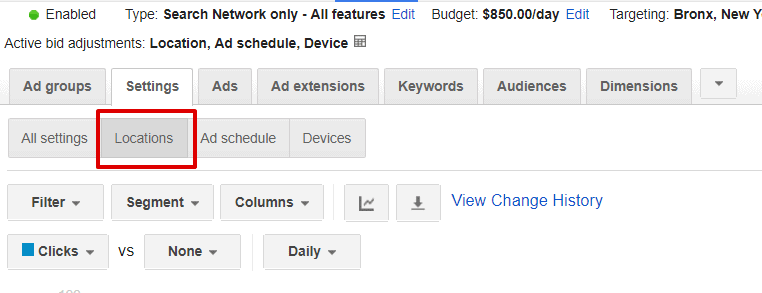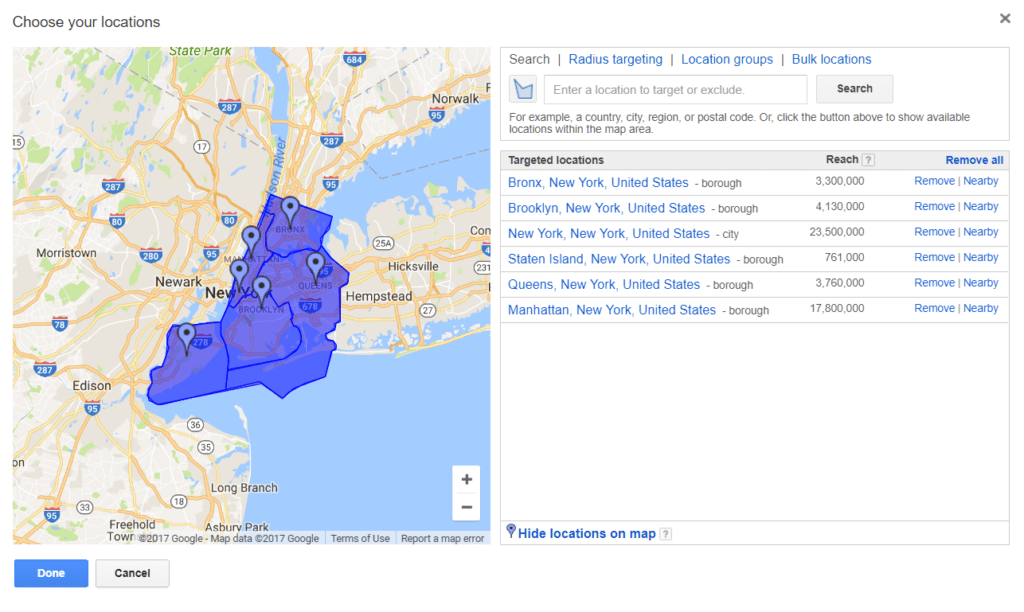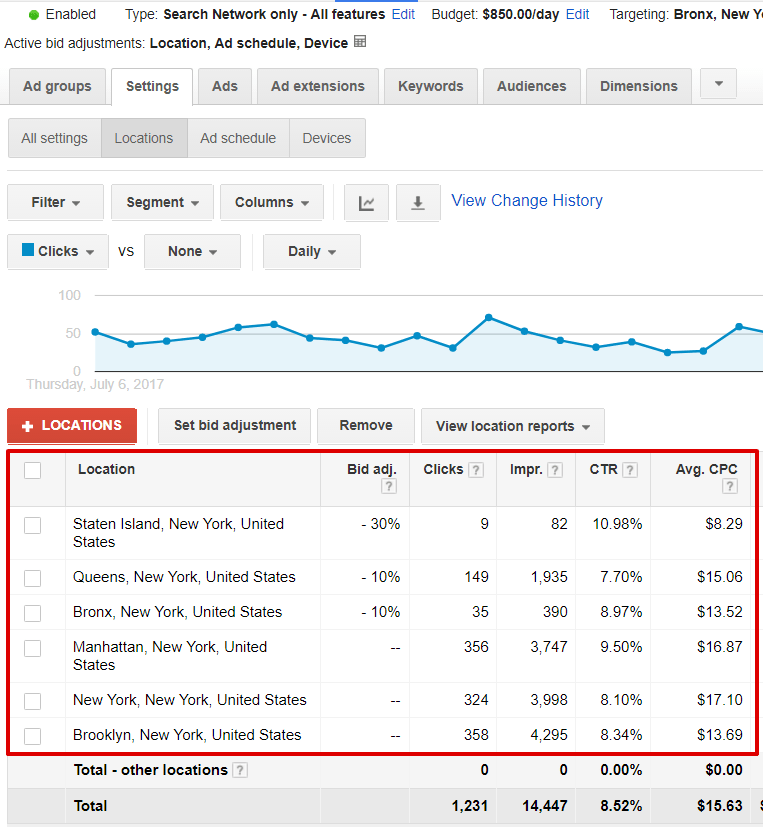
Adwords 101: Using Location Targeting
Making money with AdWords is hard. One of the most important facets of every successful pay-per-click campaign is good targeting. Learn how to setup location targeting to help shift your PPC campaigns toward profitability.
One of the most powerful components of online advertising generally, and Adwords specifically, is the ability to layer targeting options to reach exactly the right audience. There are dozens of different ways that you can refine targeting in Adwords, but this post will focus on one of the most important and most common: location-based targeting.
Why Location Targeting Is Important
The ability to refine your targeting and reach a narrow, targeted audience is a vital component of advertising, and it is the key area in which online advertising has a gigantic advantage over traditional forms of advertising. For a majority of businesses, location is one of the most important aspects of targeting. If you are operating a small retail chain in Chicago, you do not want to be advertising to people who live in Indianapolis. You want to target people who are most likely to buy your goods or services. Those people are going to be people who live near your business.
Setting It Up
The great news about adding location targeting is that setting it up is incredibly easy. Assuming you have a campaign setup already, it is as simple as navigating to your campaign, clicking on the settings tab, and then clicking on location, which you can see below. Then it’s simply a matter of targeting what you’d like to target, and saving the settings. And there are many different location structures to target.

Types of Location Targeting
How you choose to target is going to depend on what your business is trying to accomplish. The narrower the targeting the better your ROI is going to be in most instances. Options for targeting include:
- City
- County
- State
- Country
- Zip code
- Congressional District
- Neighborhood (in some cities)
- Nielsen Designated Market Area
- Location Radius
No matter what sort of business you operate, there is a great targeting option for you, and you can combine targeting options for even more precision.
Determining Your Targeting
So you know you need to use location-based targeting, but you’re not sure how to best utilize it. We have a few suggestions. We always recommend you err on the side of making your targeting too tight as opposed to too broad. The worst thing that can happen is you aren’t getting enough traffic and need to make it broader. Think about your customers. Where do they come from? If customers need to visit your business, how far away will they typically travel to get there? If you’re a Starbucks, for example, your targeting is going to be as tight as possible, because no one is walking even 4 blocks for Starbucks. If you’re the only Ferrari mechanic within 200 miles, you can make your targeting much wider. Even if customers don’t visit your physical location, people are more likely to buy if your business is closer.
Applying Your Targeting

Now that you know how you want to target people, it’s time to setup your targeting. To do this you need to follow a few steps:
- Make sure you’re on the locations tab in your campaign settings.
- Click on the large red +Locations button.
- Click on the “advanced search” link to bring up a map with all your targeting options. (see image)
- Search for the type of targeting you want to use. You can also use the link for radius targeting at the top.
- When you have your chosen location target, click add.
- When you’re done adding all your locations, click done.
Location Targeting Strategies

And when you layer multiple location targeting options you can refine what you want to do. Let’s say you run a moving company in Brooklyn, New York. Your most likely customers live in Brooklyn, but many live in the other boroughs in New York City. For your ad campaign, you can target each individual borough, and then make bid adjustments on the boroughs that are less likely to bring business like The Bronx or Staten Island. This allows you to spend the most targeting your most likely customer while still reaching good potential customers for less money. You can see what this looks like in the image to the right. This can also be accomplished in areas without the same degree of granularity that New York City has. You can use the radius targeting option to achieve the same effect. You can set up multiple target radii–Let’s say 25 miles and 10 miles–and have a positive bid adjustment for the 10 mile targeting radius, which means you’re willing to spend more per click for those clicks than you are on clicks from 25 miles out.
Bringing it all together
For almost every business, location targeting isn’t just a good thing to do, it is a critical component of a successful AdWords campaign. Most AdWords campaigns lose money and one of the main reasons they do is because they are reaching too broad an audience. Tightening your location targeting is the first step of a tighter, more targeted, and profitable audience. Have any questions? Leave it in the comments below!
Related Articles

- PPC
A Winning Google Ads Setup For DTC Brands
Most ecommerce brands view Google as an afterthought behind Meta. They think that Google is not a strong acquisition channel for…

- Social Ads
- PPC
How Meta & Google Complement Each Other
Learn how Google & Meta Ads work synergistically to complete the buyer's journey.

- PPC
Google is Robbing You… and You Can’t Stop Them
If you’re advertising on Google, they’re reaching their hand into your pocket and jamming money into theirs.
How can we help you grow?



